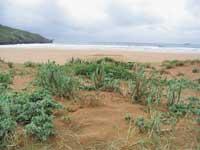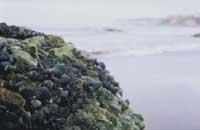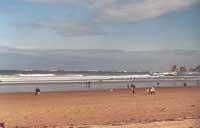Ecology of the beaches
2004/06/01 Rementeria Argote, Nagore - Elhuyar Zientziaren Komunikazioa Iturria: Elhuyar aldizkaria
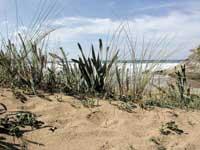
The beaches of Euskal Herria are not an example of a natural beach worldwide, they are not as admirable as the distant solitary beaches, there are no turtles to spawn or multiply the whales, but there is something to see. The beach is a hard area and really like this, but it is amazing how many species of plants and animals have adapted to live in a hostile environment. They usually do not form large colonies, but the ecosystem of the beaches is richer than it seems at first sight.
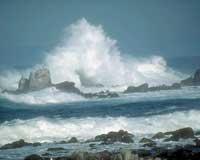
The land, which inhabit the sand, hardly have protection: there are no trees that subject to the sun and the wind shook it directly. Neither do those who live in water or on the rocks of the shore have an easy life, since they have to maintain the flow of the waves. And, in addition, we must take into account the incidence of the tide, since some areas of the beach perform under the water half day and out of the water the other half.
To deal with these harsh living conditions, the inhabitants of the beaches have adapted themselves naturally. But they have also had to face the human presence. The construction works carried out on the Basque coast have reduced the habitat and, therefore, have reduced the number of living beings, which makes the coastal natural ecosystems have more and more limitations.
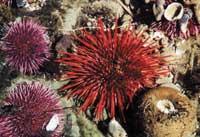
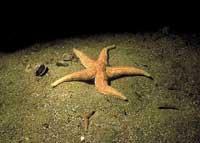
Despite the richness of species, in terms of food, the network of relationships between living beings is not very complex. Ecosystem trophic chains are relatively short of those of other ecosystems. This characteristic is especially accused in the water, since many large animal species are filtering, that is, they filter the water to obtain food, especially the zooplankton.
Beach waters of the beach
The aquatic trophic network is based on photosynthesizing living beings such as phytoplankton and algae. In the areas exposed to the waves hardly grow algae, being the unicellular algae the base of the feeding, like the cyanophytes. The pelagic fauna is fed both zooplankton and larger animals, as well as fish, both vertebrates (cabracho – scorpaena scrofa –, platija or jabirón) and invertebrates (octopus and chipiron, for example).
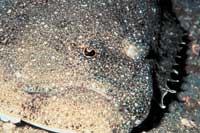
In areas where the waves do not arrive strongly, large algae grow. And they have more fertilizers by hand, especially detritus. The detritus is formed by animal and vegetable remains, excrements and other remains. Bacteria, fungi and other microorganisms destroy the detritus, which allows to accumulate nutrients in the bottom for algae.
The environments full of algae are very rich ecosystems. The algae help to fix the earth, smooth the strength of the waves and are an ideal place to hide from the sight of predators. Stuck to these large algae grow other small invertebrates that attract older animals, the marine horse ( Hippocampus sp. ) and the maiden ( Coris julis ), among others. In this way, a complete trophic network is constituted.
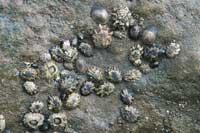
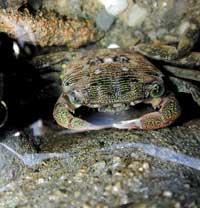
The interaction between so much life and the activities of individuals causes the detritus to occur without ceasing and enriches the ecosystem. For example, sea urchin and many crustaceans eat detritus such as, and also feed the filtering ones when they arrive mixed with water.
Glued to the rock
But in the rocks surrounding the beach there are usually few calms. And their animals are specially adapted to the environment in which they live. The mussels, for example, adhere strongly to the rock so that it is not dragged by the waves during the pleamar, with strong capers to protect itself from predators and avoid sunbathing in bajamar.
The competition for occupying space in the rocks is hard. Marine sponges, anemones, algae, mussels, percebes, lapas... all want to conquer a piece of rock and be part of the suction cup. Its protection includes traveling crustaceans such as crabs and fish. There is no doubt that many species of molluscs, algae and fish live in the rocks.
Arena Arena Arena
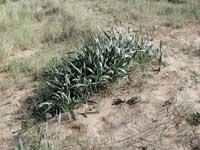
The dry area of the beach is less rich in nutrients. But, sometimes, the galerite provides part of the wealth of marine ecosystems. And there are storms that are terrible.
And although it is capable of resisting the strength of the waves, some algae are removed from the ass, and some animals are also caught by the stream and dispersed by the beach. When the sea goes back, a feast of calluses begins for insects, crabs, birds and so on.
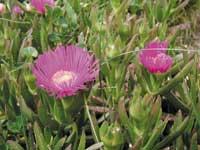
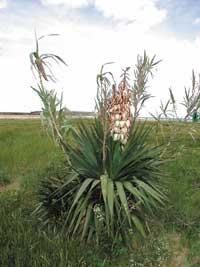
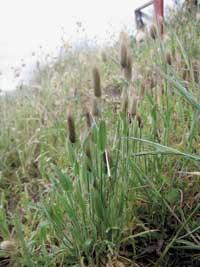
But the storm is something punctual and the residual life depends on the harsh conditions of time. Despite the influence of the surrounding climate, the beach itself is a dry medium, since, despite the frequent rains, it moves from top to bottom with ease. And as if it were not enough, the bisuts of the coast salina everything that catch in front of him.
The vegetation grows in an environment not exposed to the sea, especially in the highest beaches and dunes. They are not usually trees and are called psammofilic plants because they are sandy. They are usually robust and not very high plants, since the wind blows strongly, in addition to the grains of sand.
As a dry medium they develop mechanisms of accumulation or localization of water. Some have a deep network of roots, such as sandstone Sammophila, others have tubers to accumulate food and there are also tubers of hair, such as marine Medicago, to collect rainwater and to minimize the loss of water by perspiration.
However, as it moves away from the sea, vegetation increases, decreasing the salinity of the environment and organizing a species of gradient of species: the closer, the greater the capacity of the plant to live in saline. Thus, halophilous plants grow in the first line.
In the search of animals, according to the time of the year, there are numerous migratory birds, mainly bordering, castanets, blackberries, slides, etc. They go down to the beach to rest and eat. But the most common coastal birds are gulls and gulls (Larus sp. and Rissa sp. ), which can be seen throughout the year, even in summer, since they will eat garbage abandoned by man.
However, at present, birds do not breed on the beach. Formerly it was a safe place for the crispy slide ( Charadrius alexandrinus ) and the small cockpit ( Sterna albifrons ) and current ( S. hirundo ), but it seems that the human presence has scared, since the reproductive season begins in August, when the beach and its surroundings remain inaccessible.
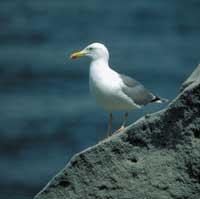
Seeing the toad runner (Bufo calamita) is becoming more difficult. It is known that it has a skin that mixes with the sand, but also is increasingly scarce, that is why it is so difficult to see. Reptiles are easier to see, especially the wall lizard ( Podarcis muralis ), but as the habitat disappears its number decreases.
The toad and the lizard are mainly fed by insects, with insects being the most abundant animals in the upper area of the beach, especially the coleoptera (scarves), dipteros (flies) and hemipteros (bedbugs). Eleven species of these orders live among the dune plants. But more noteworthy are the snails, especially in summer, which are very abundant, such as Cepaea nemoralis, Theba pisana whitish or Cernuella virgata.
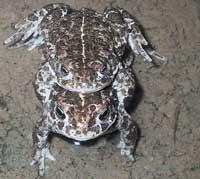
You can't get bored watching these curious beings from the beaches. Unfortunately, in Euskal Herria, as in most of the world, the ecosystem of the beaches is increasingly weak. Many of the expensive frontline homes have been built on dunes and the elegant promenades have limited the beach. The coastal landscape is admired, but it has been little respectful of the beach ecosystem and there are fewer and fewer possibilities to enjoy watching it.
Mediterranean meadows Posidonia oceánica forms large grasslands in the Mediterranean Sea. This marine grass grows mainly in shallow waters and is especially important for the periplayero ecosystem, since it softens the strength of marine currents and tides, thus avoiding the erosion of the coast and providing protection to various living beings. According to studies, more than 400 species of plants and more than 1,000 species of animals can be collected under the protection of P. oceanica. However, this plant is in serious danger of extinction, so the villages of the Mediterranean coast are very worried, since they are the habitat of many fishing species, not only of fish, but also of molluscs and crustaceans. It seems that the main cause of risk is pollution, but some fisheries have not done any favor either, especially those that raise the seabed. These fisheries are, of course, prohibited, but the damage they have done so far has no turning back. |
Kuilua de mus, the success of the hardest
The mussels form large bends that make space attached to the rock, in addition to having a special capacity of adhesion. But in that work they have a strong competition: the algae. However, in areas very rich in organic matter, mussels are the winners. This matter prevents the entrance of light rays, since water is usually more cloudy and the algae do not have enough energy to perform photosynthesis.
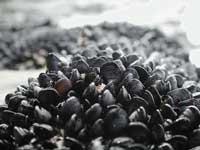
Organic matter can come from a natural source, but currently the main source is the pollution produced by man. Thus, large amounts of mussels grow in coastal bays and not only in the intertidal zones, as appropriate, also cover the seabed in areas of high pollution.
This fact is very useful when analyzing the degree of pollution of the medium, since the mussels are used as an indicator. In fact, in the salts of mussels there is usually a great diversity of living beings, as the crabs are very abundant. However, as the level of pollution increases, this diversity is drastically reduced, so that by measuring the diversity in mussels balances, the situation of a medium can be analyzed.
Cleaning machines of beaches
At first glance, it seems that the clean maintenance of the beaches is the most suitable for the environment, and for this purpose, for years are used beach cleaning machines. But these machines not only collect the garbage thrown by the human being, but also carry the algae brought by the sea, the remains of animals, etc. And many of the living creatures of the beach are left without food.
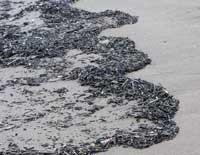
A group of researchers have been studying the ecosystems of 40 California beaches since 1995 and have found that disasters with machinery have less life and that the diversity of species is much lower than those that do not use machines.
In addition, in the beaches where the machines enter, it is practically impossible to form and grow the natural dunes, since it is the plants that support the sand to form the dunes and the machines do not allow the growth of the plants. What plant will grow in the sands in continuous revolution?
Apparently, the beach is too clean, neither garbage nor life.

Gai honi buruzko eduki gehiago
Elhuyarrek garatutako teknologia



